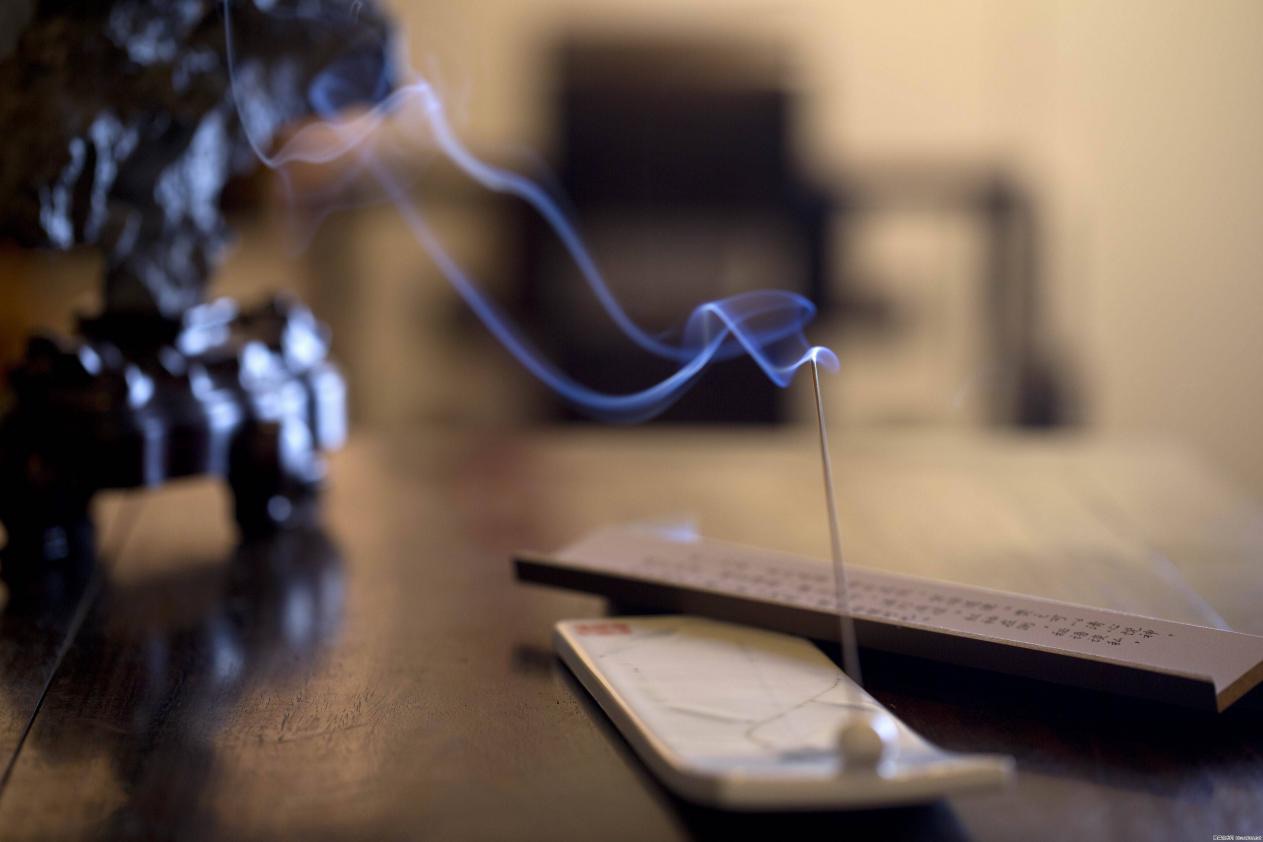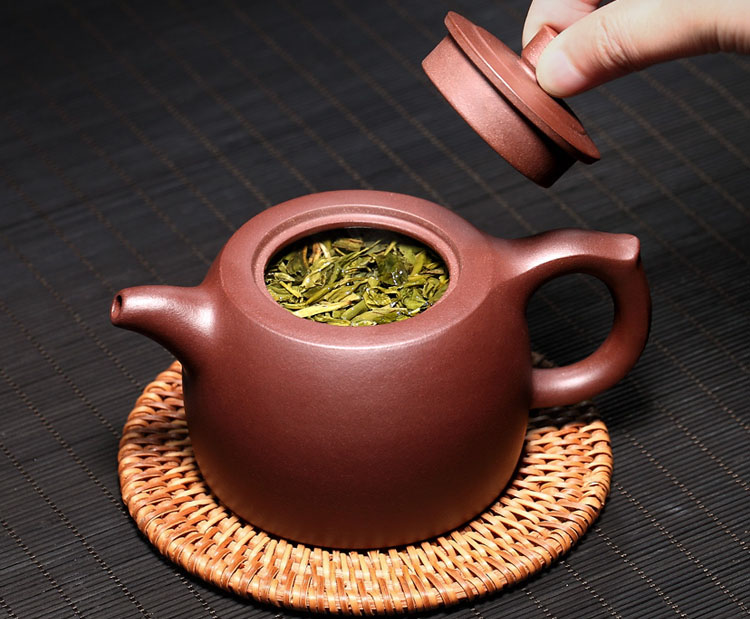In Chinese, the word “gongfu” has multiple meanings - skills, art, dedication and effort. Just as the name implies, it takes time and skills to make Gongfu tea. The Gongfu tea ceremony actually makes the preparation and presentation of tea an art form.
Previously we've introduced a full guide on the traditional Gongfu tea ceremony discussing the meaning and brewing tools required. In this post, we introduce a detailed 21 step gongfu tea ceremony.
Usually people use oolong, pu erh and black tea to make Gongfu tea. For example, a tea we love to brew gongfu style is a Da Hong Pao from Wuyi Mountain. With its special “rock charm” and long lasting aroma, this famous oolong tea is more than suitable for a Gongfu tea ceremony.
Step 1 - Wash Hands, Burn the incense & Introduction
Before you start the ceremony, you need to first wash your hands for hygiene purposes.
Then burn incense to create a relaxing mood in the room. Incense is often first burned before the ceremony to increase the spirituality of the tea session. While the incense is slowly burning, you'll start to feel more calm. It's a good moment to realise how grateful we are that our ancestors has passed down the cultural tea heritage.
While the incense is burning, this is also a good moment to introduce your guests the process of a tea ceremony. For first time attenders, a ceremony could otherwise be overwhelming.

Step 2 - Present the tea leaves
The teas are often kept in a jar that suits the ceremony scene. To begin the ceremony, the tea artist uses a special spoon to pull the tea leaves out of the jar. The leaves are placed on a plate and shown to each guest. The observation of the dry leaves and the enjoyment of the aroma are part of the appreciation of the tea.
Step 3 - Heat the teapot
A pretty Yixing purple clay teapot is often used during a ceremony. It was invented by Shi Da Bin, a famous potter of the 17th century. The artist pours hot water on and into the teapot to warm it up first. Warming up the teapot will allow you to better isolate heat when you steep the tea.

Step 4 - Add tea leaves into teapot
A good amount of the tea leaves is needed. Fill the small teapot 4/5 full when steeping Da Hong Pao or Dancong. This sounds like a lot. However, unlike Tieguanyin oolong, Da Hong Pao tea leaves are less tightly rolled and therefore can take up a lot of space when they're dry. For other teas, you can generally add 8 grams of leaves.
Step 5 - Add water into teapot
During tea ceremonies, hot water is often boiled in a iron tea kettle. When the water is ready, lift up the kettle to a certain height, aim towards the rim of the teapot, and pour boiling water into the teapot till the water spills out slightly.
While pouring, you can enjoy the sound of it that resembles the mountain stream. This step is to moisten and wash the tea leaves.
Step 6 - Scrape away the bubbles
Use the teapot lid to scrape away the bubbles on the water surface, then put the lid on the teapot. The movement should be gentle like a spring breeze stroking the face. There's nothing wrong with the tea if you see such foam on the surface (also known as tea scum). It's due to the a chemical reactions when the tea leaves come in contact with hot water.
Step 7 - Rinse the teacups
We use the first steep to rinse the teacups and optionally wash your tea pets. Then drain the infusion into the tea tray.
Step 8 - Add water into teapot again
Pour boiling water into the teapot again till the water spills out slightly. Put the lid on, and then pour boiling water on the outside of the teapot as well. This again makes sure the isolation of heat inside the pot is better.
Step 9 - Pour the infusion into the fairness pitcher
The steeping time is different for every tea. Because gongfu sessions have a high leaf-to-water ratio, the steeping time is usually just a few seconds. You can gradually increase the time with a few seconds for every subsequent brew.
When the tea is ready, drain it into the fairness pitcher. Such pitchers are useful to make sure every cup you serve will taste the same.
Step 10 - Pour the infusion into the fragrance-smelling cups
Besides drinking cups there are "fragrance-smelling cups", which are used for enjoying the lingering aroma of the tea. Pour the tea from the fairness pitcher to the fragrance-smelling cups quickly and evenly.
Step 11 - Drop by drop pouring
When there is only a small amount of tea left in the pitcher, pour it drop by drop into each fragrance-smelling cups.
Step 12 - Cover every fragrance-smelling cup
Cover every fragrance-smelling cup with an empty teacup.

Step 13 - Transfer the tea to tea cups
Hold the aroma cup and the tea cup with the index and middle fingers on both sides, while the thumb presses on the bottom of the tea cup. Then the artist quickly reverses the two cups to transfer the tea from the aroma cup to the tea cup.
Step 14 - Serve the tea
Serve each guest a teacup filled with tea and with an upside-down fragrance-smelling cup inside of it.
Step 15 - Enjoy the aroma from the fragrance-smelling cup
Lift the fragrance-smelling cup up and roll its rim gently against the teacup rim to get rid of the drips. Hold it with two hands and raise it towards the nose. Now enjoy the intensified aroma of the tea.
Step 16 - Teacup holding gesture
Show and explain to your guests how to hold a teacup steadily and elegantly. Use the thumb and the index finger to lift the cup up while the middle finger hold the bottom of the teacup, which is called “Three Dragons Guarding the Ding (an ancient cooking vessel)”.
Step 17 - Observe the liquor colour
The liquor colour of Da Hong Pao is dark orange. However, depending on the types of the teacups, the liquor colour is sometimes different around the rim and at the bottom of the teacups.
Step 18 - Taste the liquor
Take three sips of the tea. Let the liquor flow around inside the mouth and savour the flavour. Pour the remaining tea into the tea tray.
Step 19 - Enjoy the aftertaste and the aroma
Enjoy the delightful aftertaste of the tea. Smell the aroma that’s left in the teacup.
Step 20 - Taste the tea for the second round
Continuously repeat step 8 to step 19 until all flavour is extracted from the tea leaves. Taste the infusion and note the difference compared to the previous round.
Step 21 - Thank the guests
Thank the guests for attending the ceremony.
A Chinese gongfu tea ceremony should not be confused with a Chinese wedding tea ceremony.